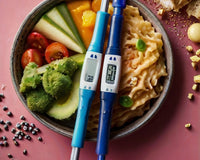HealthyPIG Magazine

The 10 foods with the highest sodium content

The diet that hides salt bombs
However, we do need sodium for important body functions, such as maintaining a good fluid balance, transmitting nerve impulses, and moving muscles. So how much sodium can you safely consume each day? The latest dietary guidelines from the U.S. Food and Drug Administration (FDA) recommend keeping sodium levels below 2,300 milligrams (mg), or 1 teaspoon (tsp), per day. You may benefit more from limiting to 1,500 milligrams, but if you're currently unable to do either of these, even cutting back by 1,000 milligrams can improve your blood pressure.
While most people already know it's best to avoid salty foods like movie theater popcorn and French fries, you also need to keep an eye out for less obvious sodium-rich foods. From canned vegetables to bread, here are some secret salt mines to watch out for.

Sodium in the diet-use nutrition labeling and reduce intake
People need a small amount of sodium to work properly, but too much sodium may be harmful to your health. According to the American Dietary Guidelines, a high-sodium diet increases the risk of high blood pressure, which is the main cause of stroke and heart disease.
Most dietary sodium (over 70%) comes from edible packaging and prepared foods, not from salt added during cooking or eating. Many foods contain too much sodium, so the US Food and Drug Administration (FDA) cooperates with the food industry to reasonably reduce the sodium content in various foods. Even though sodium may already be contained in many packaged foods at the time of purchase, you can still use the nutrition label to reduce your daily sodium intake.


